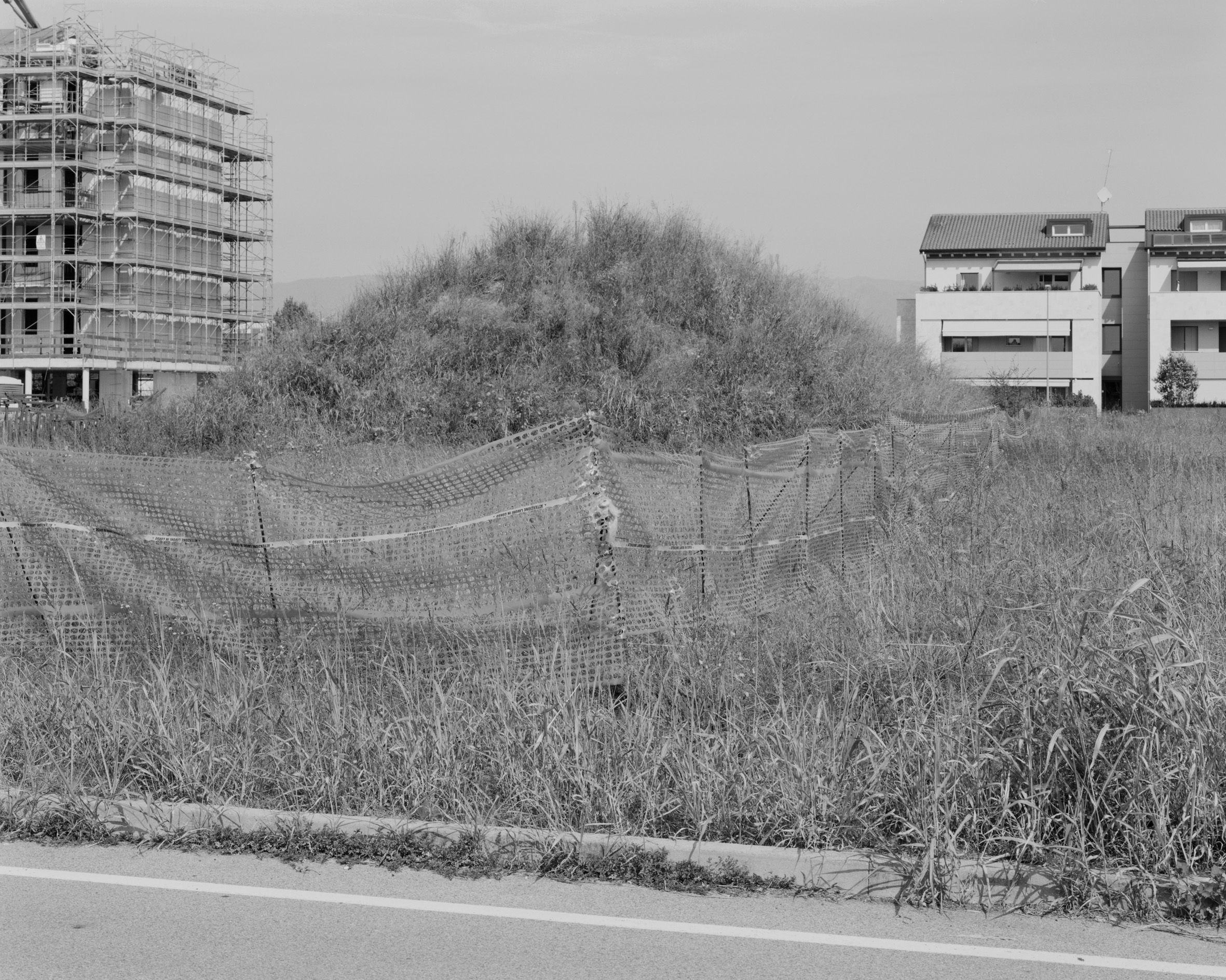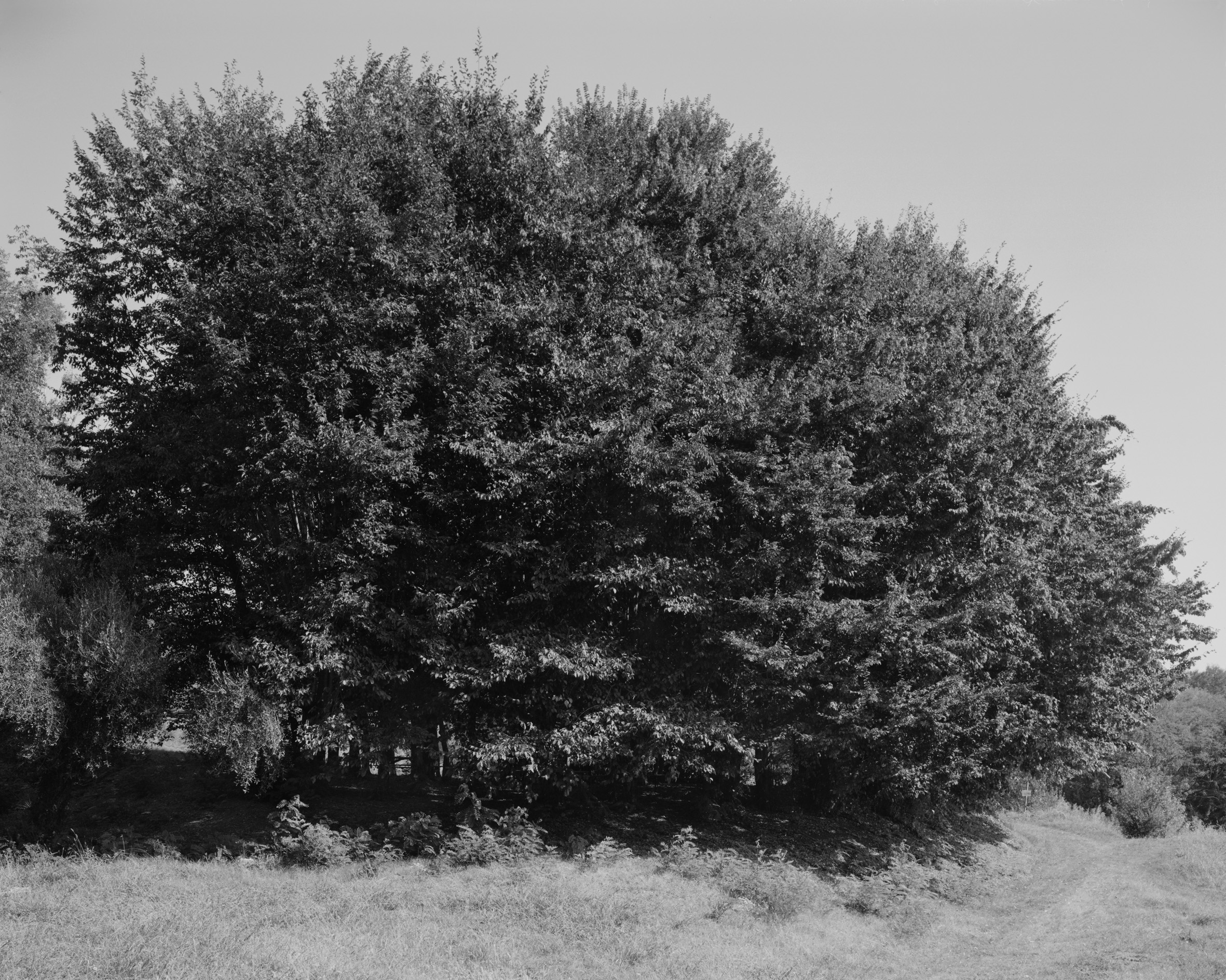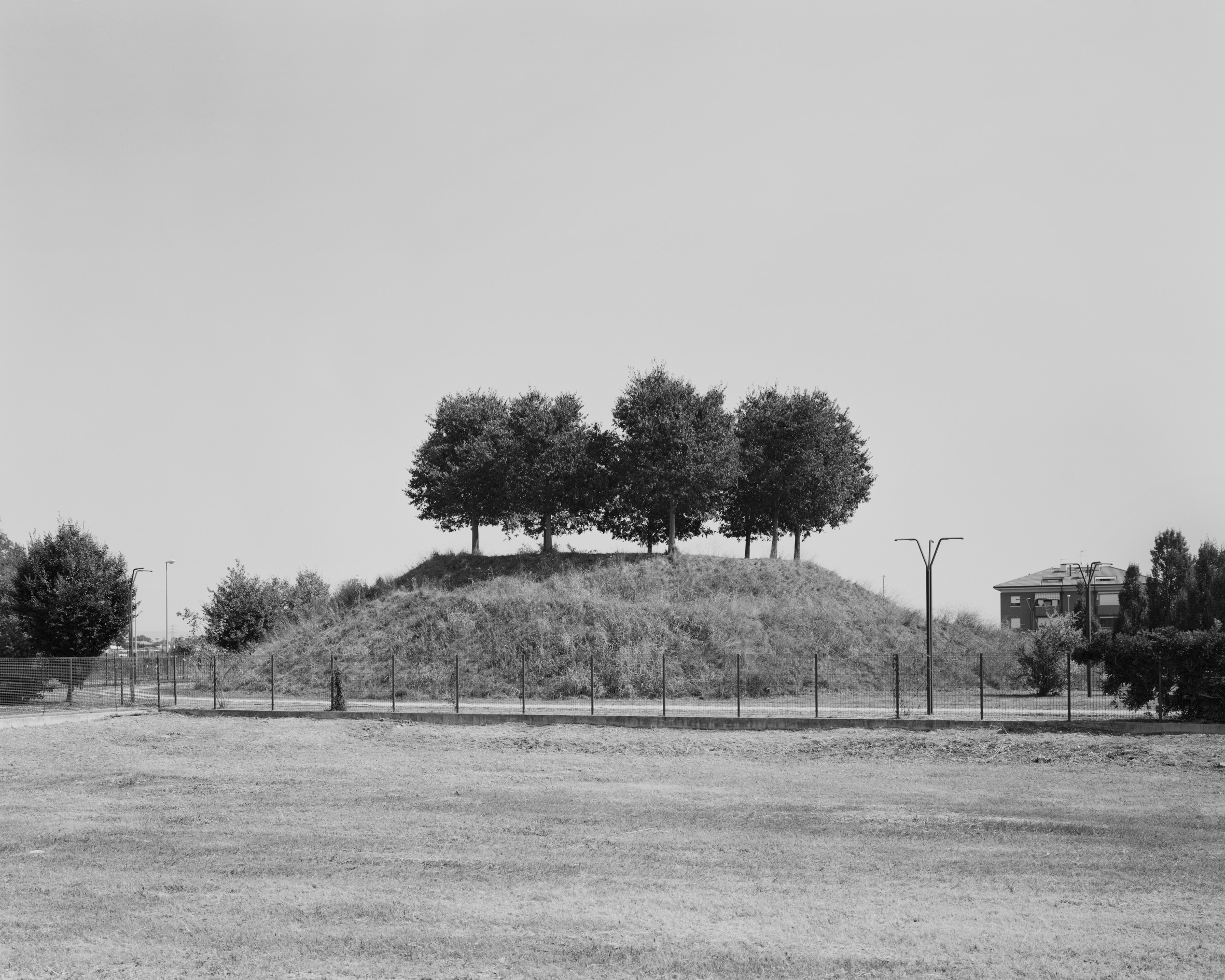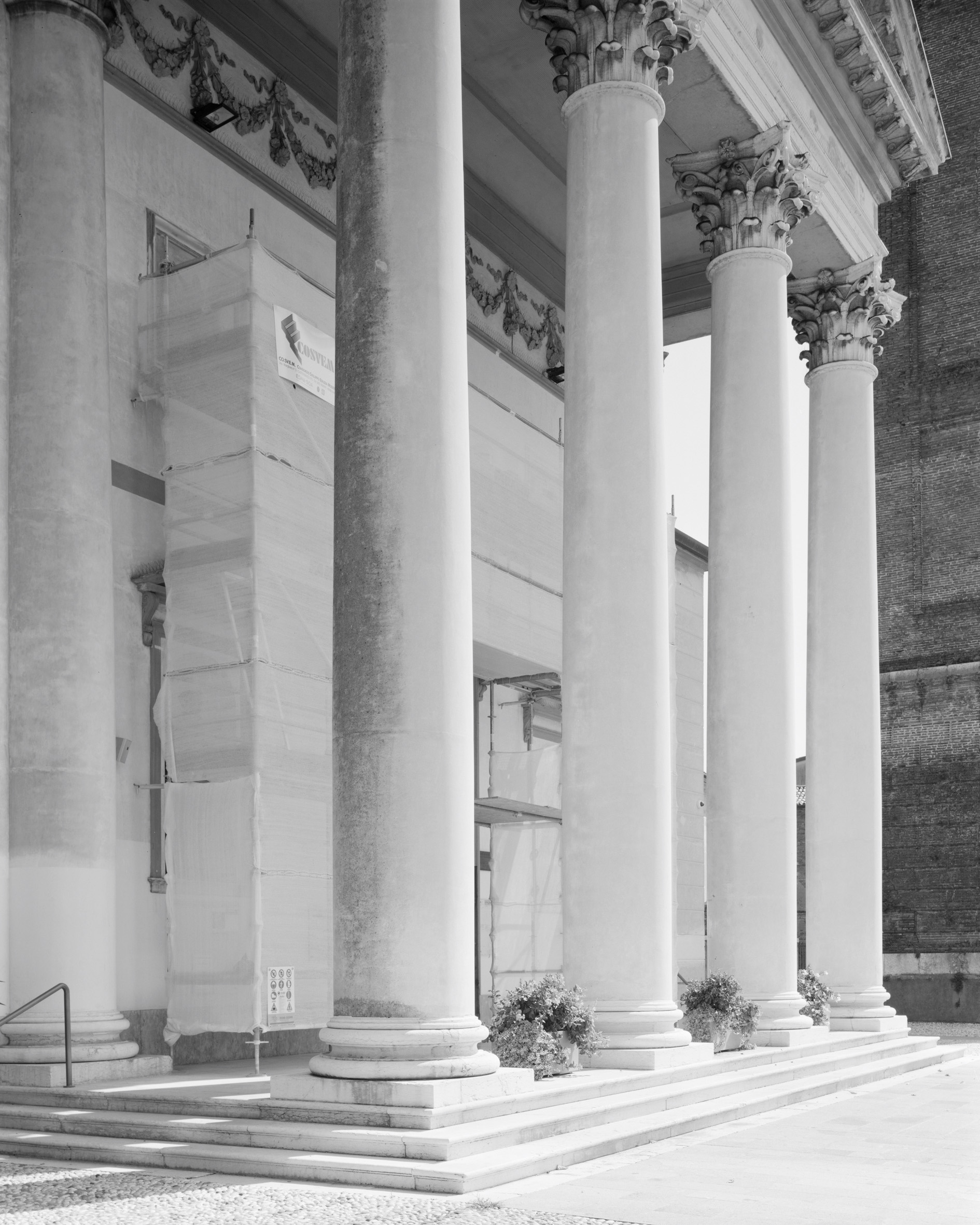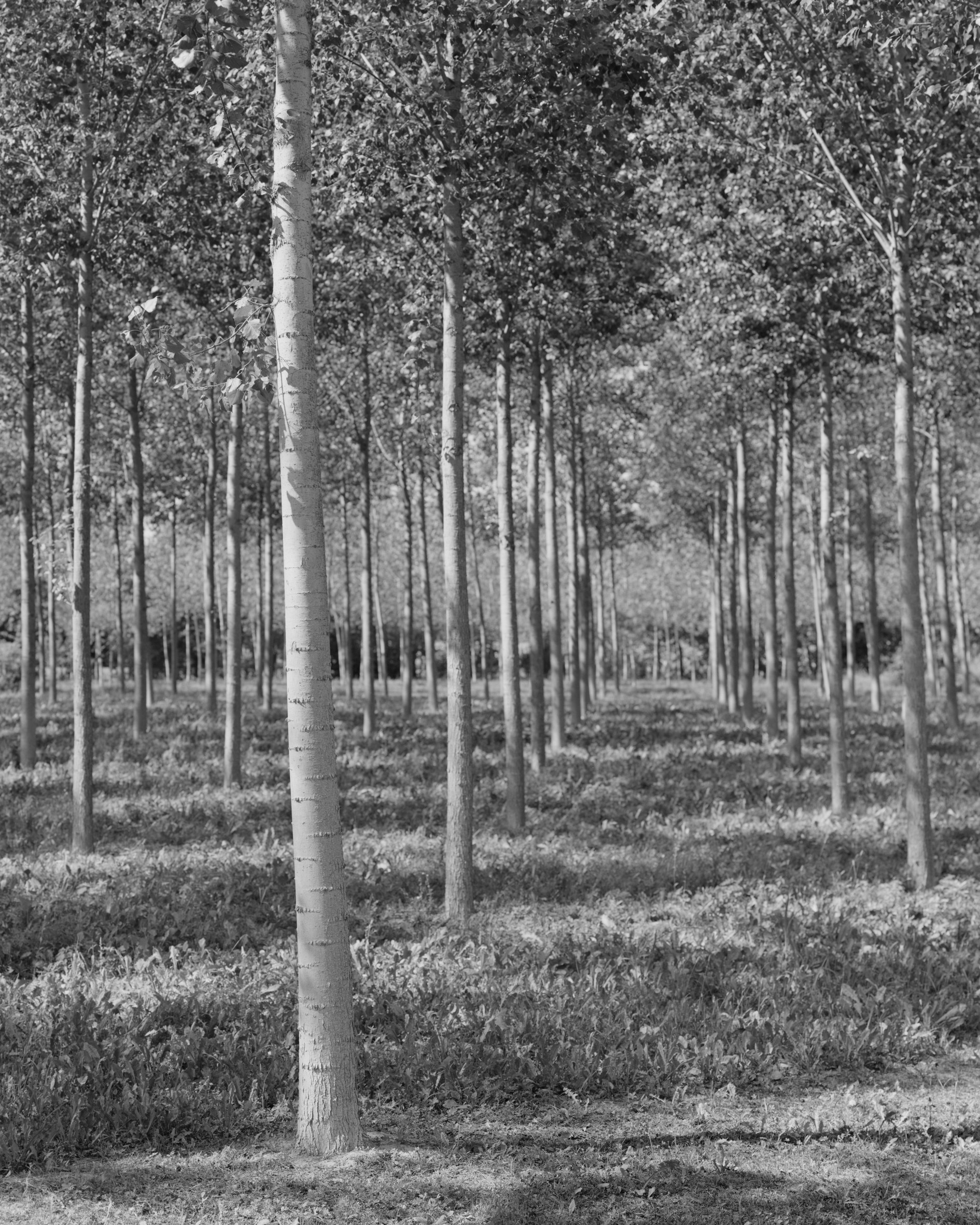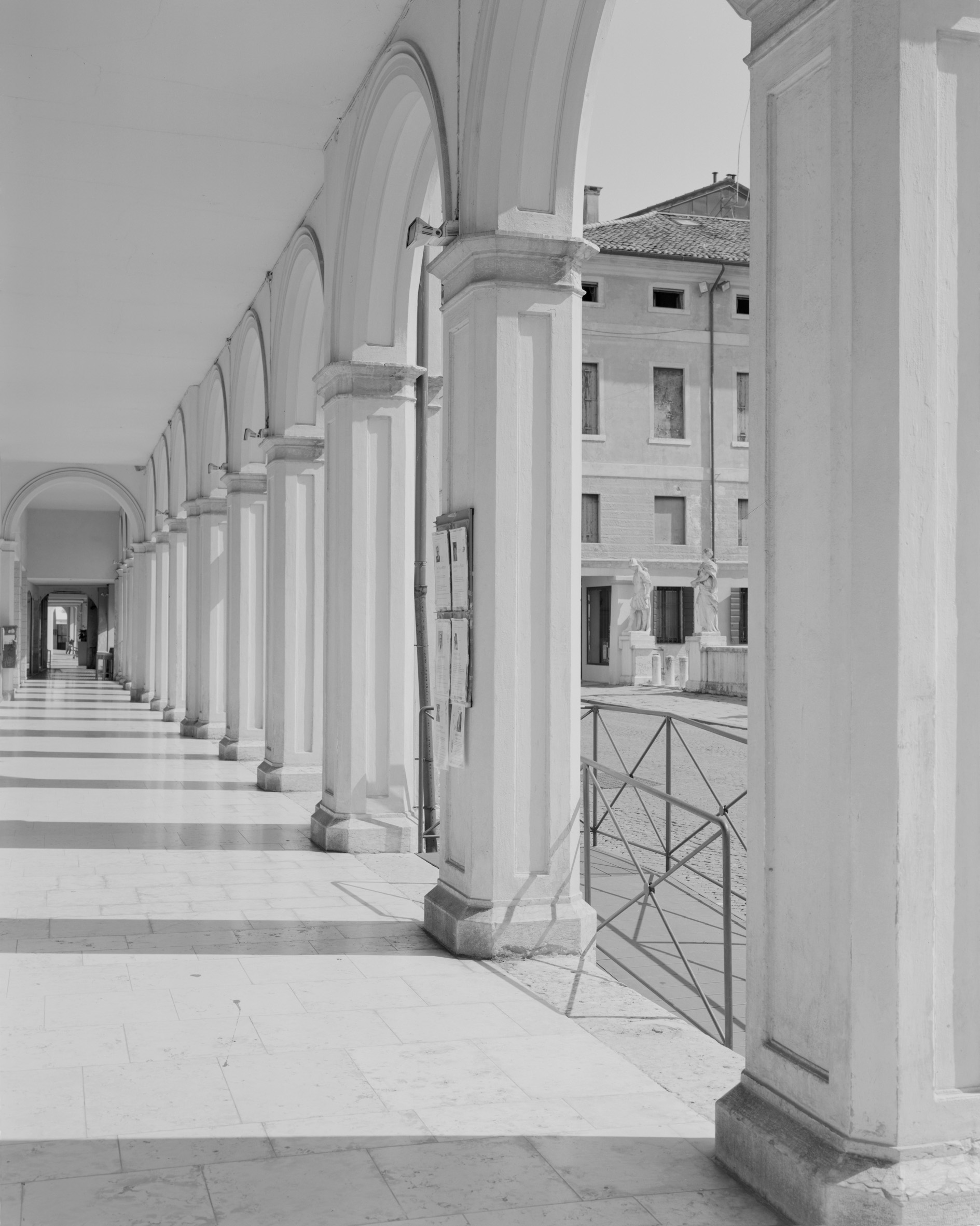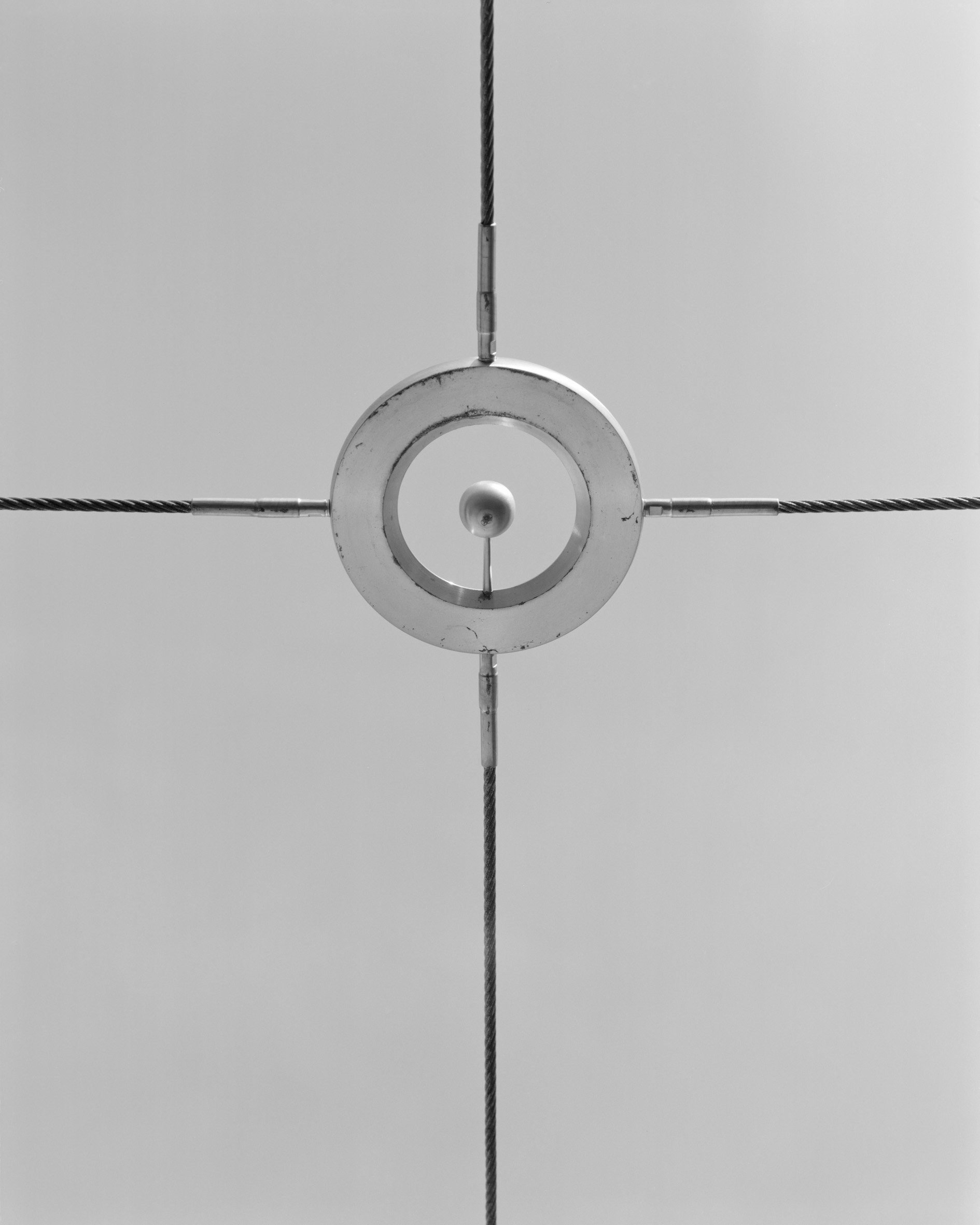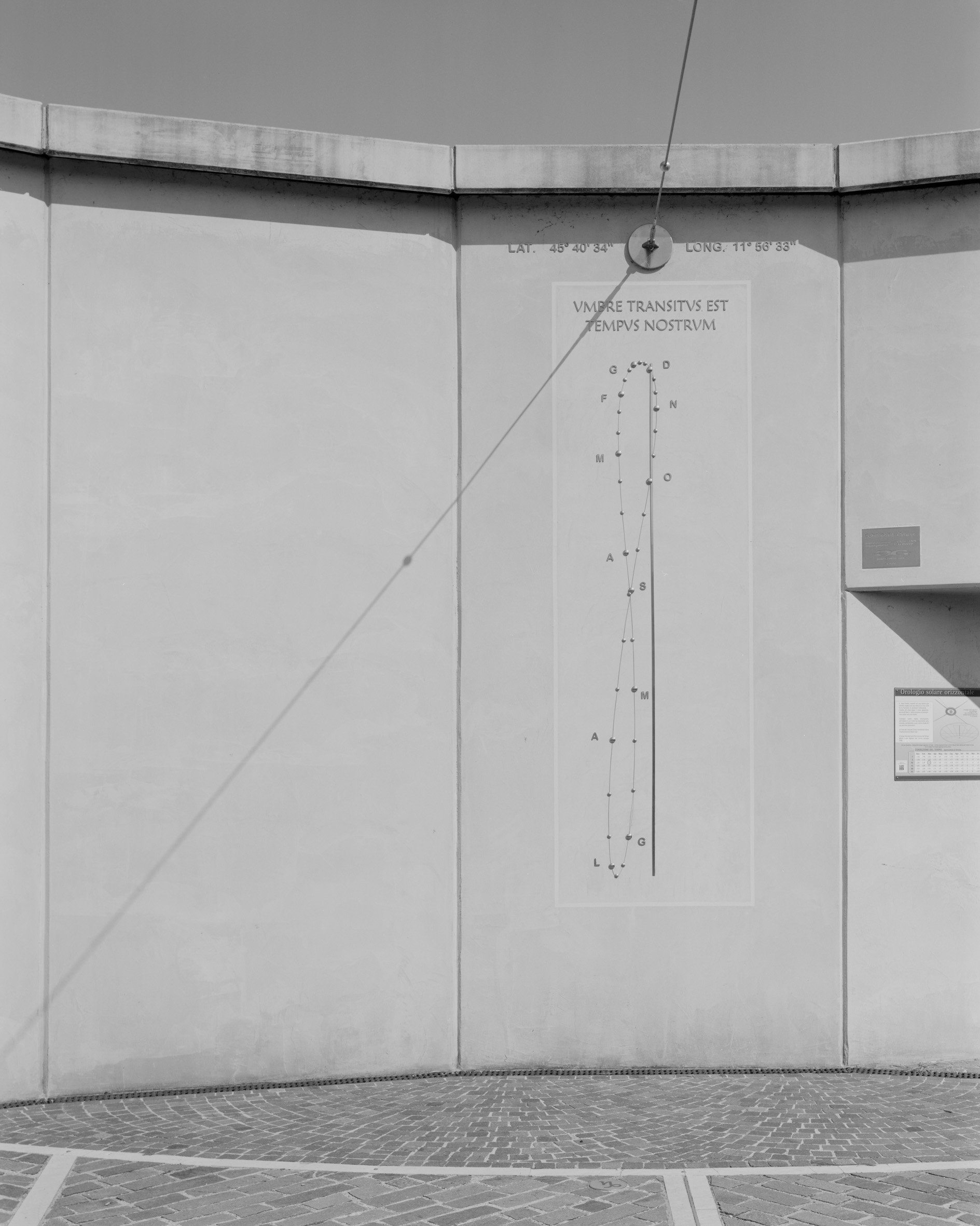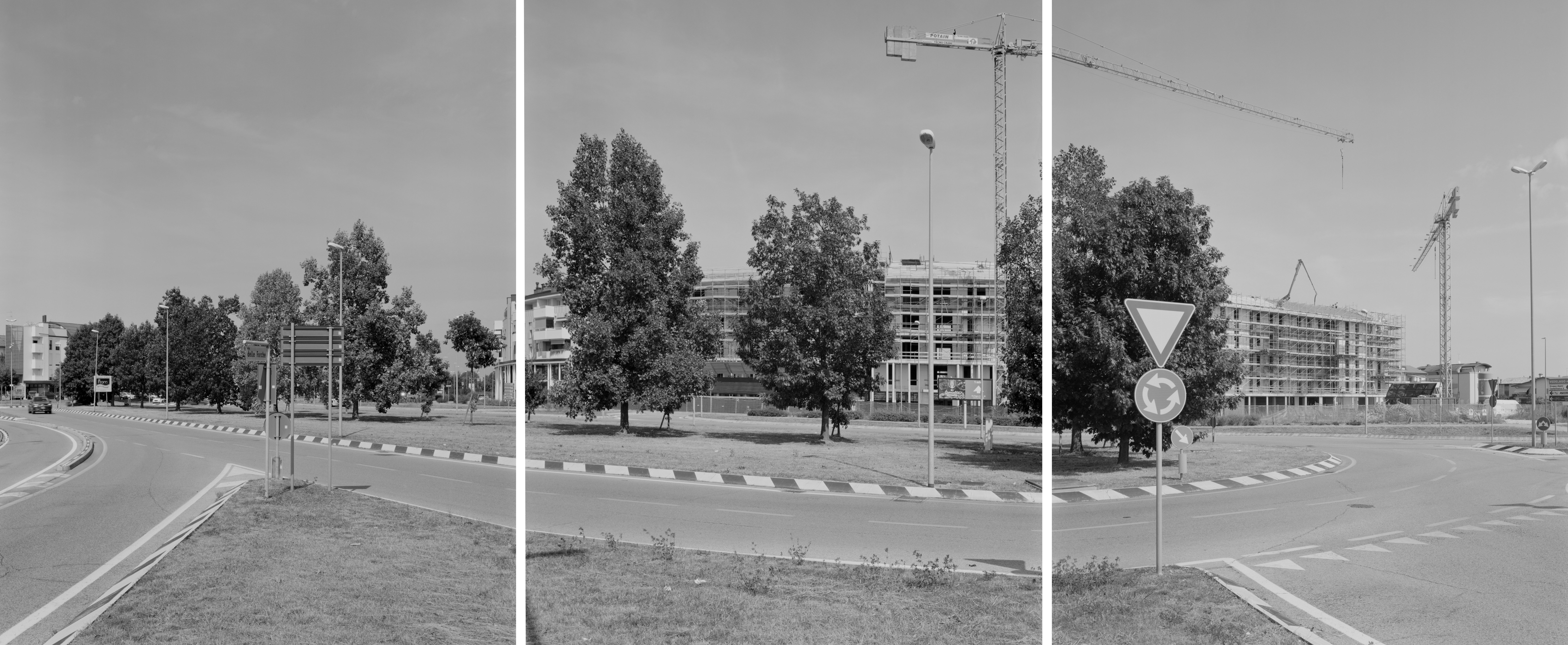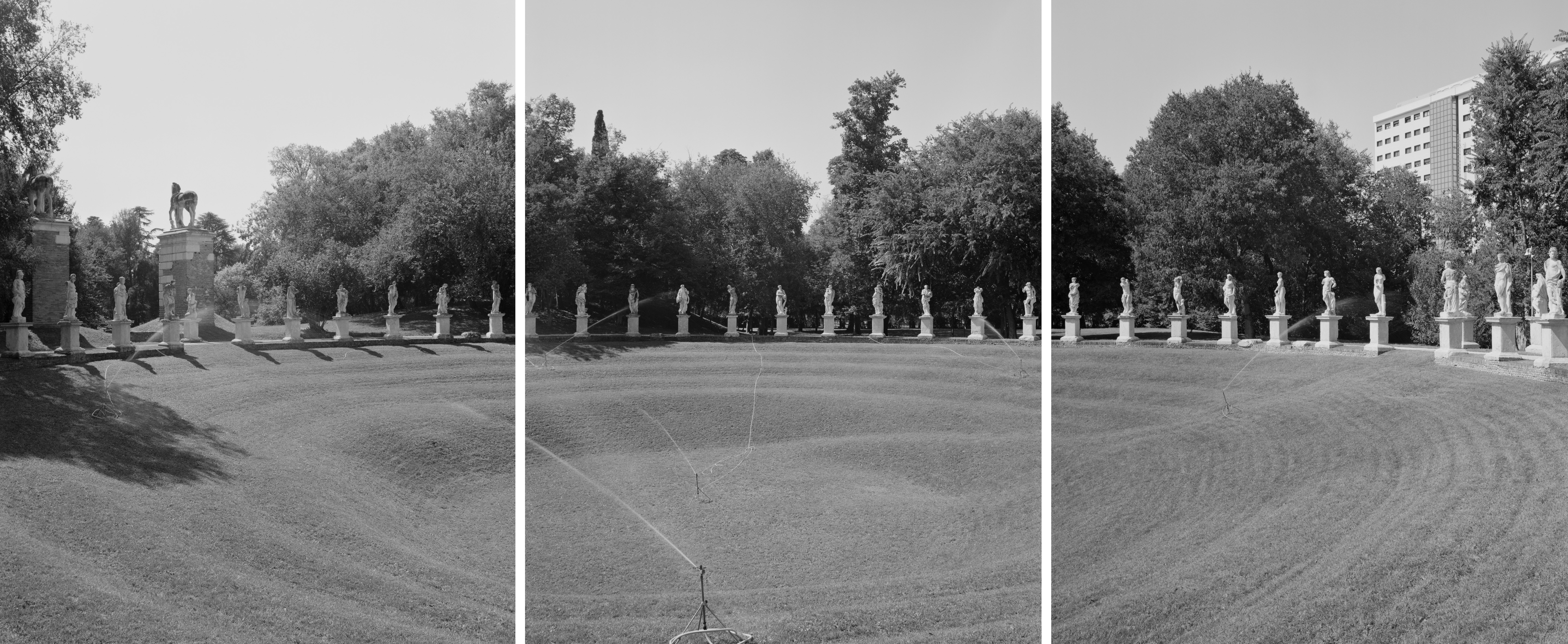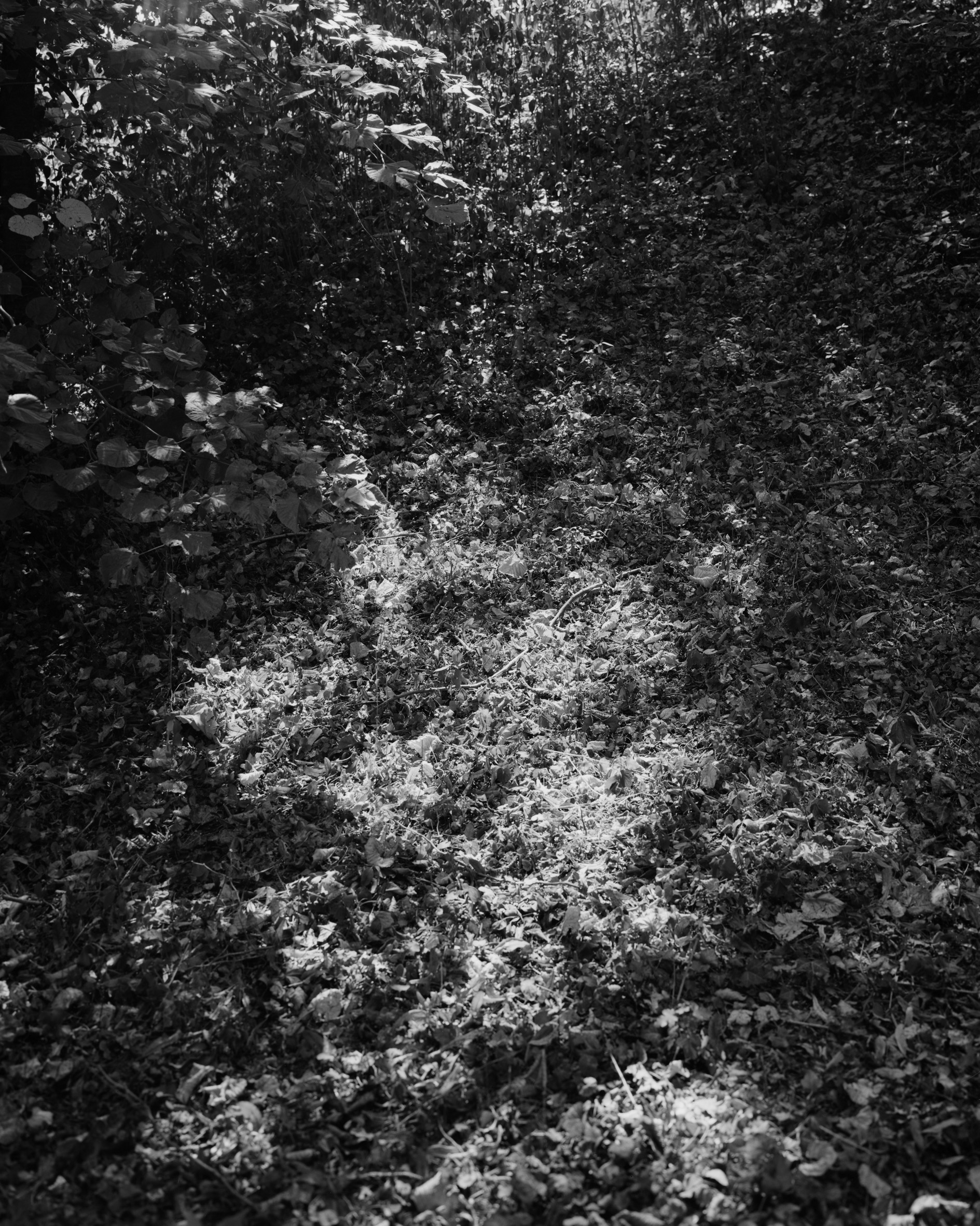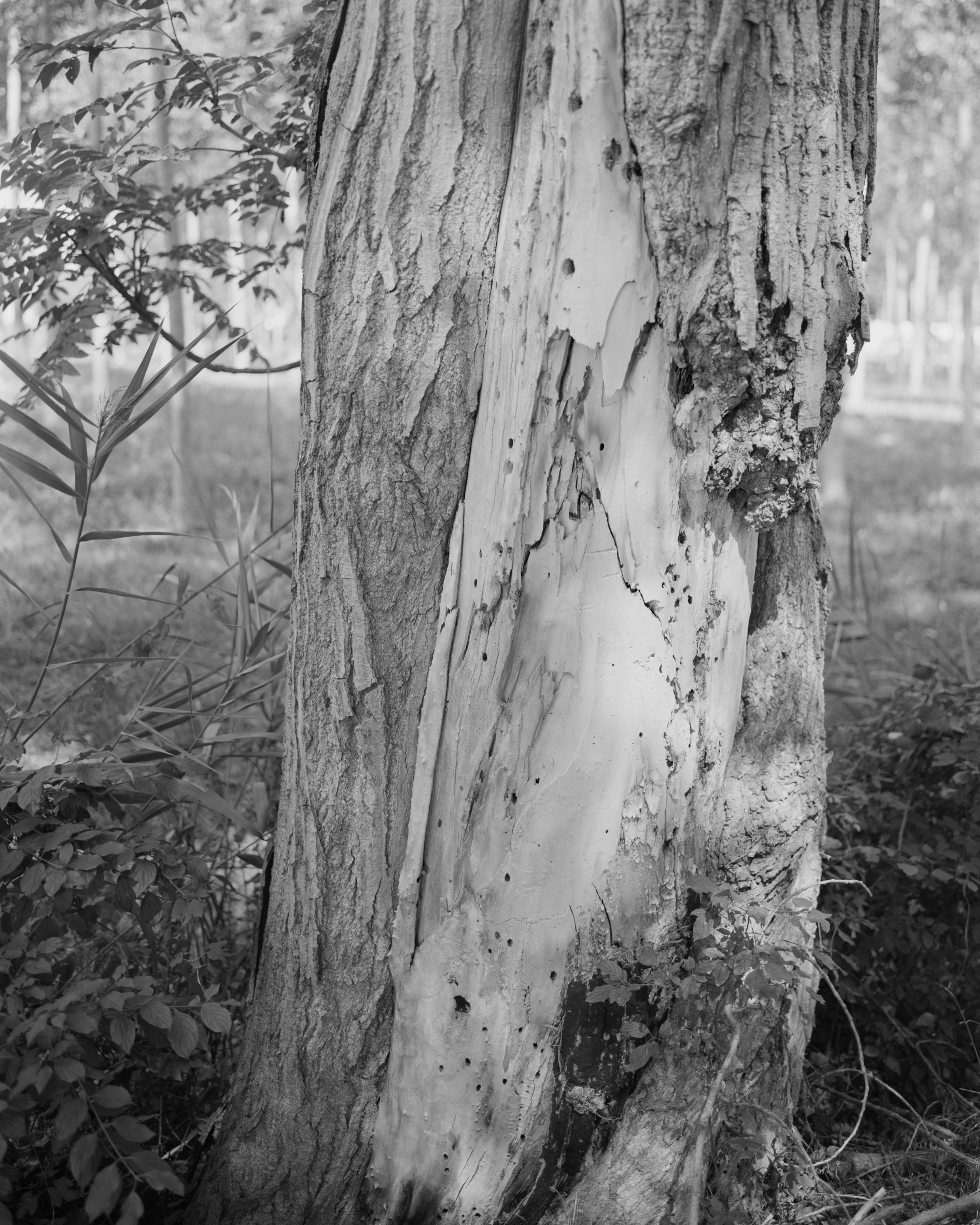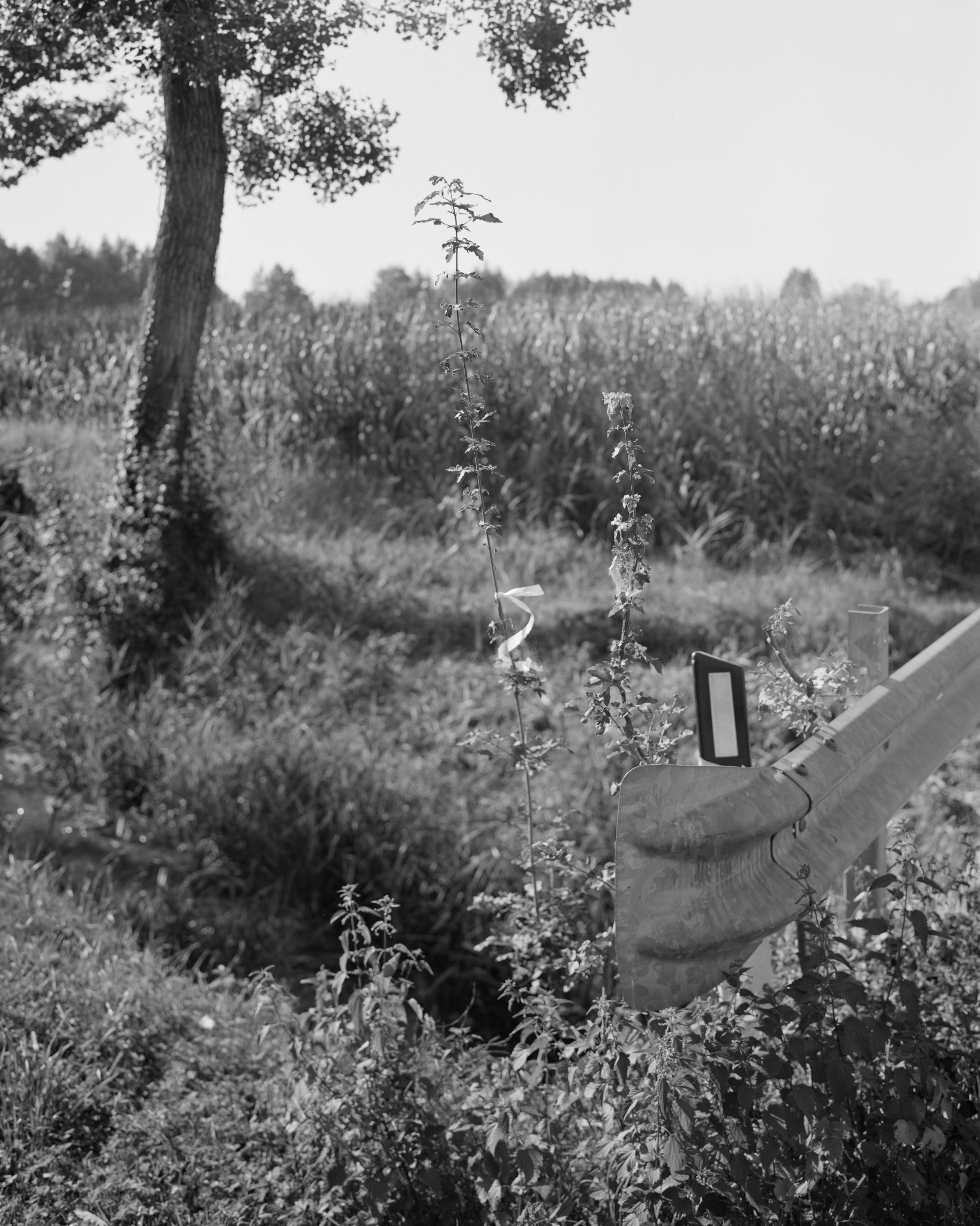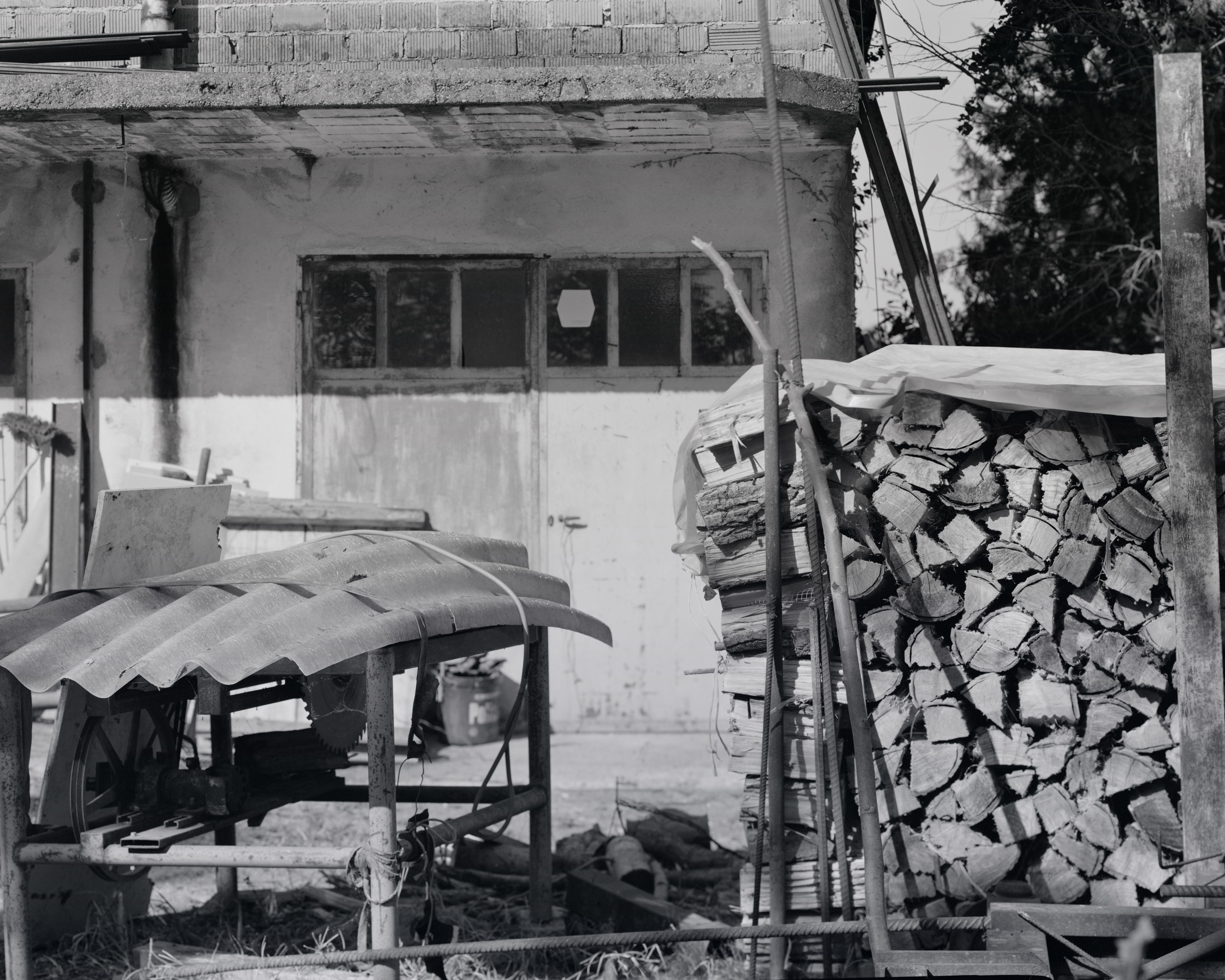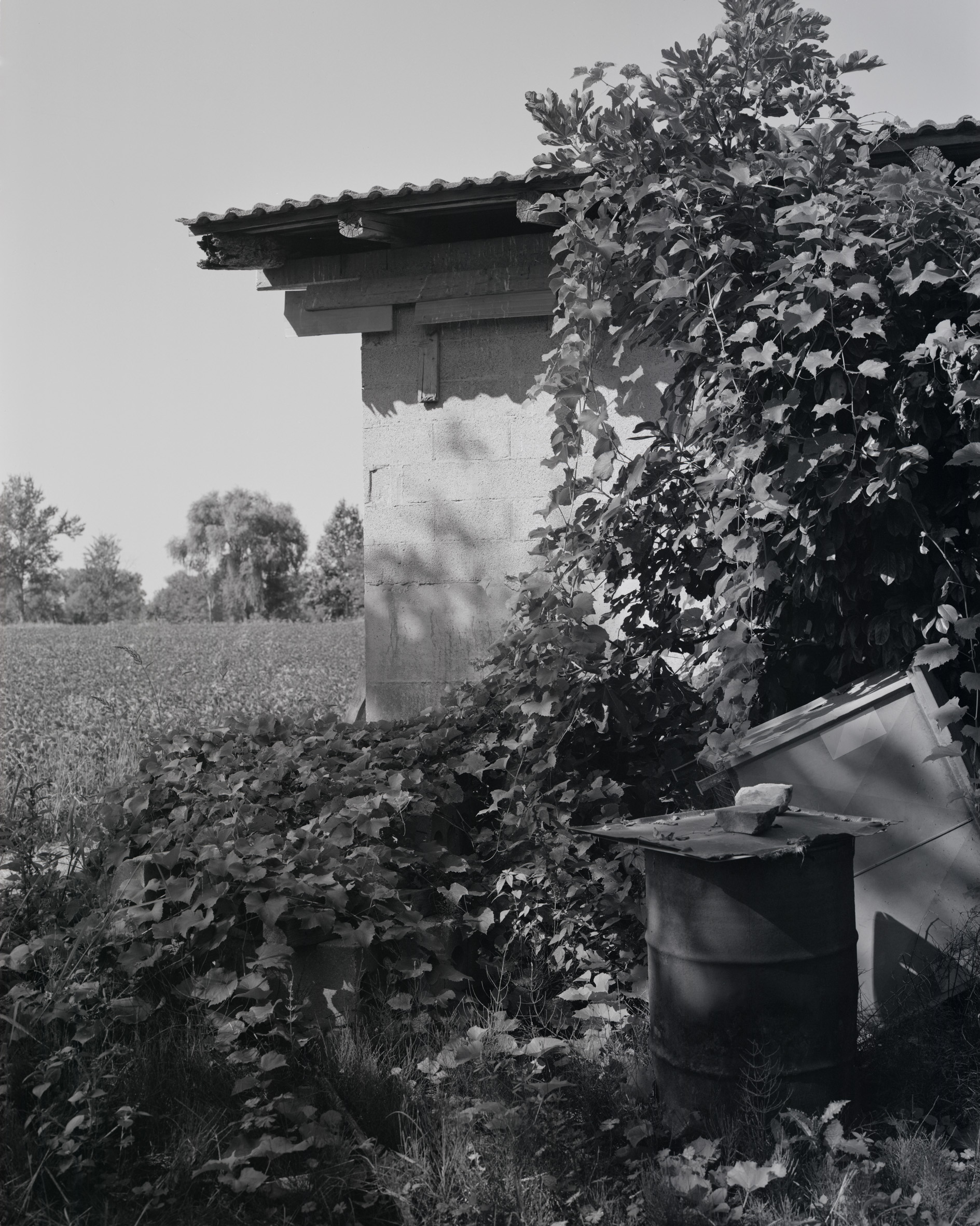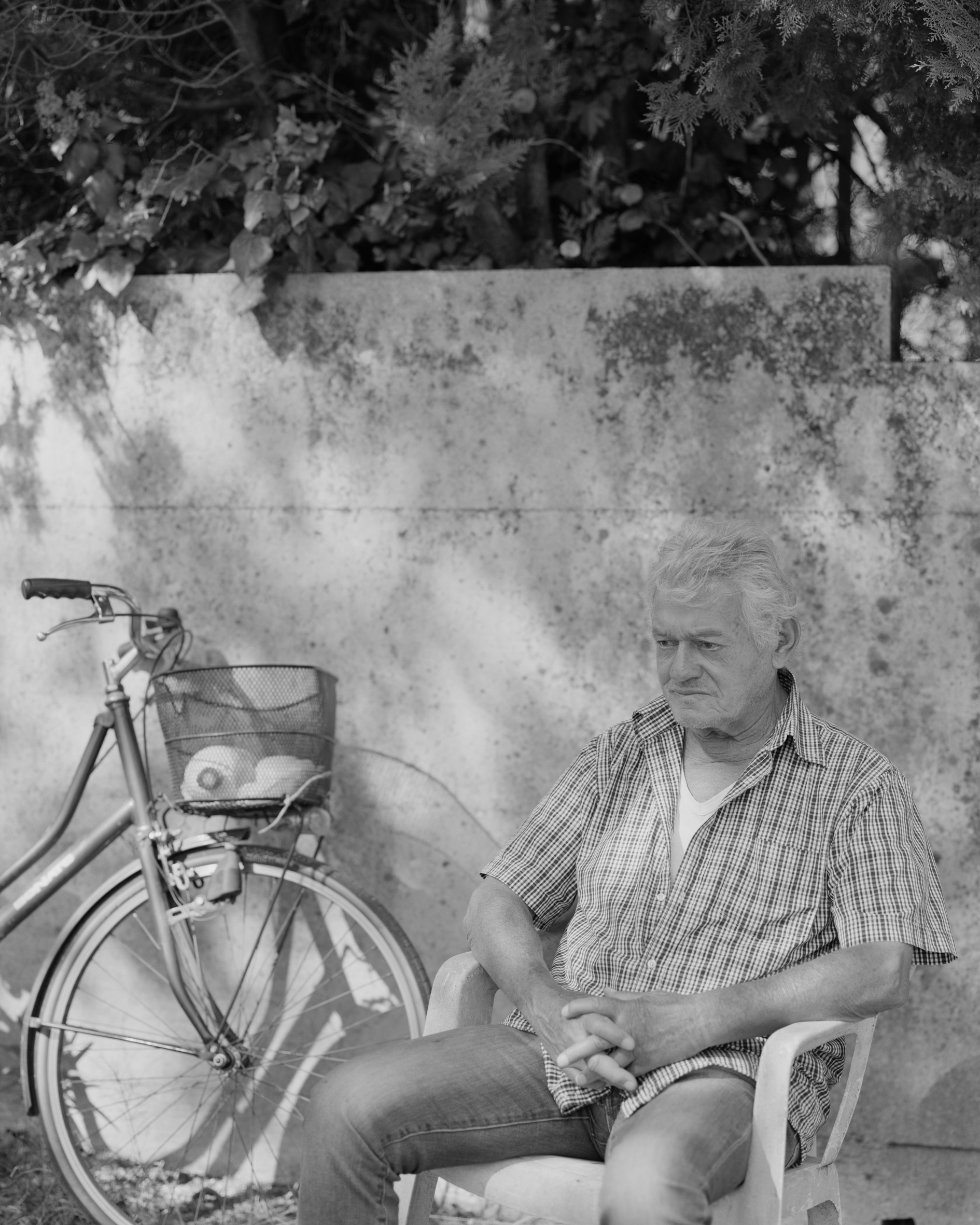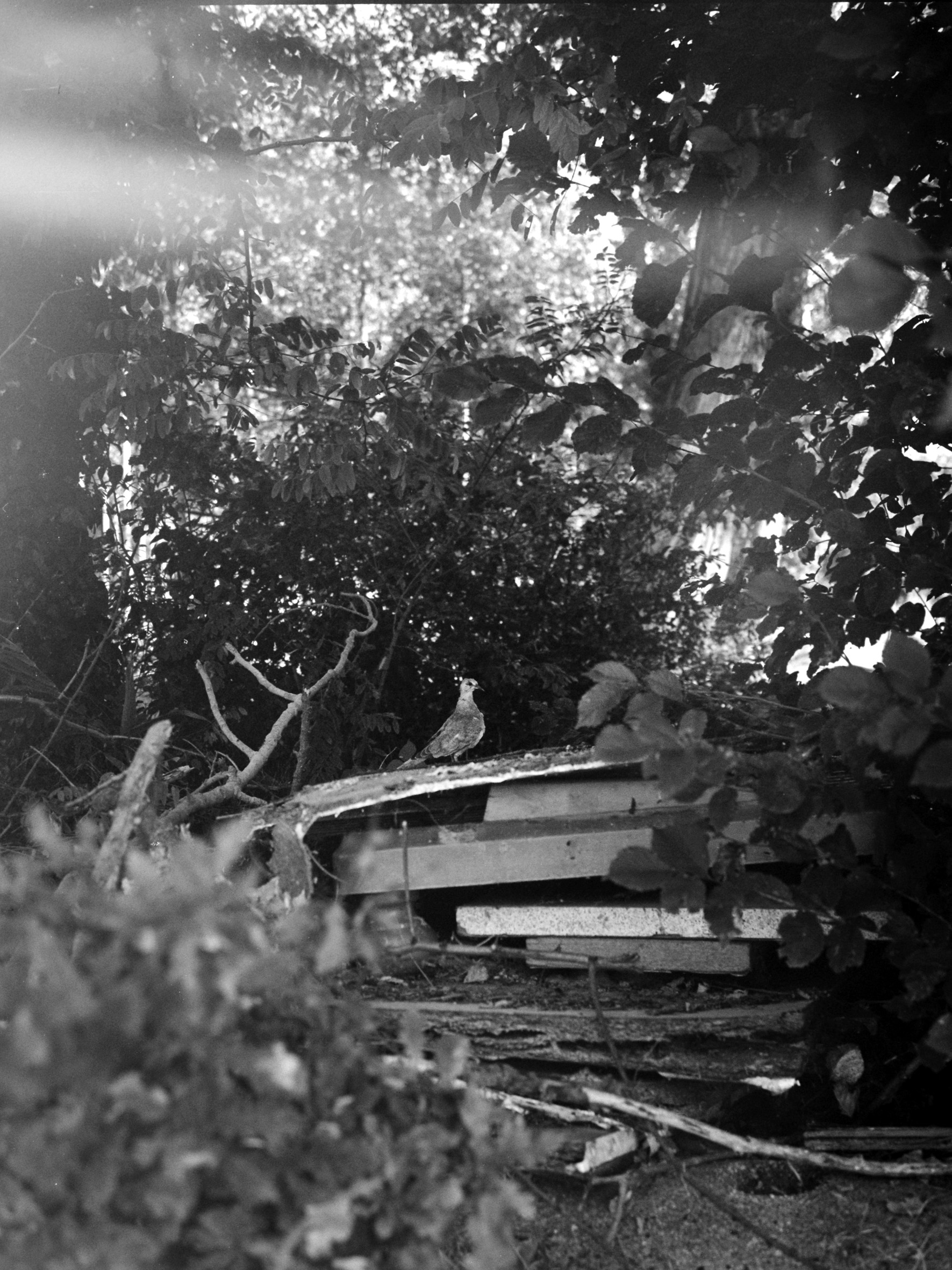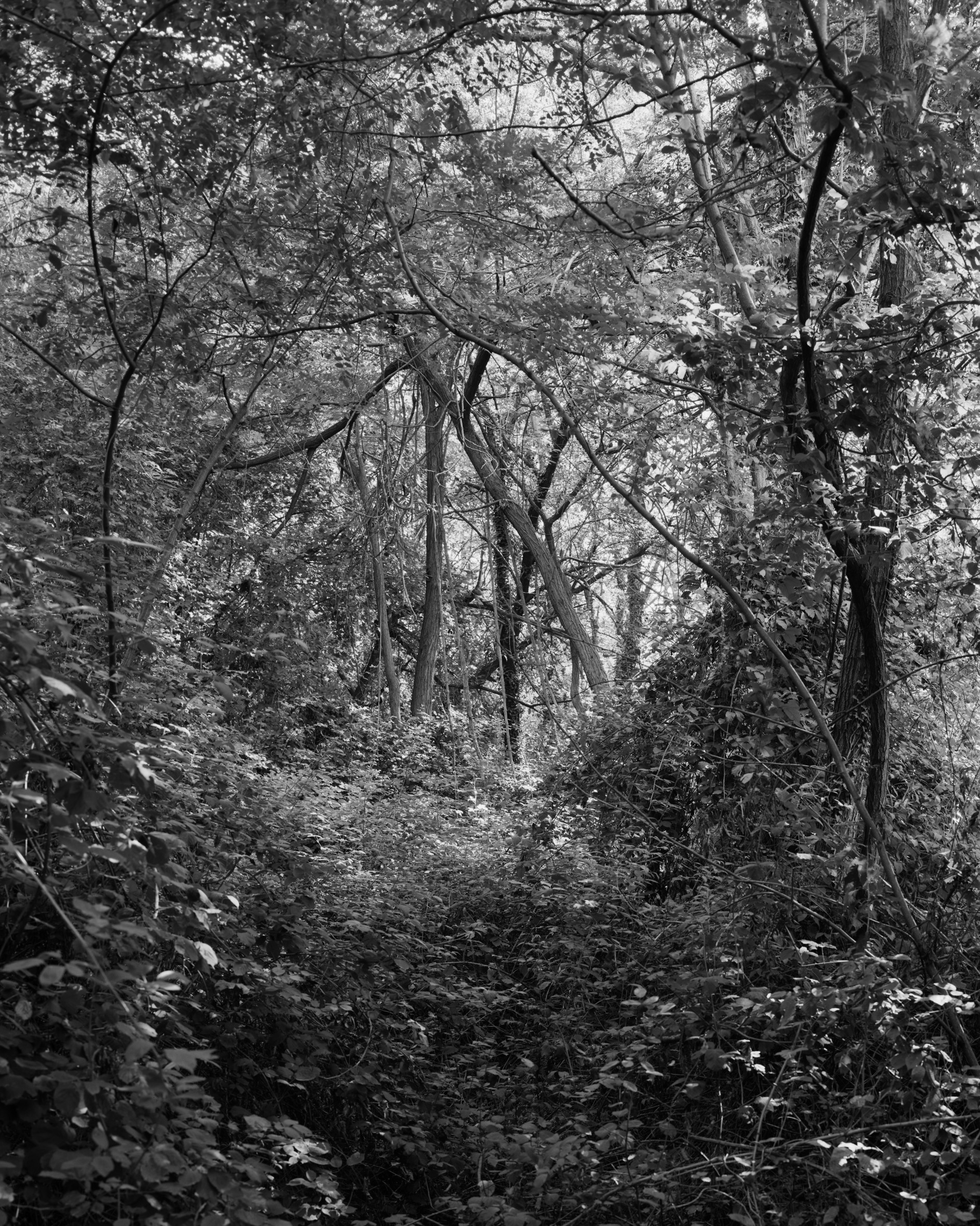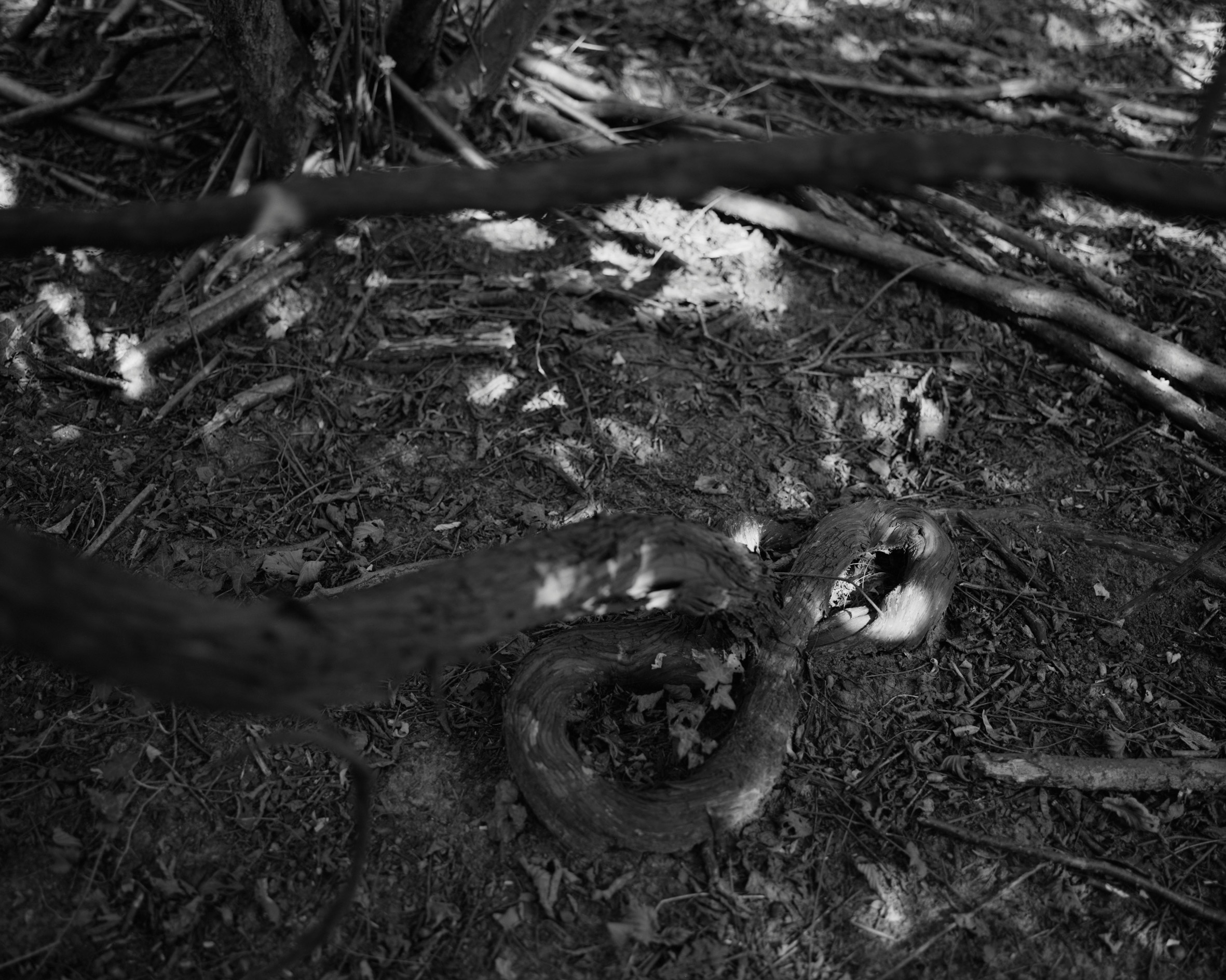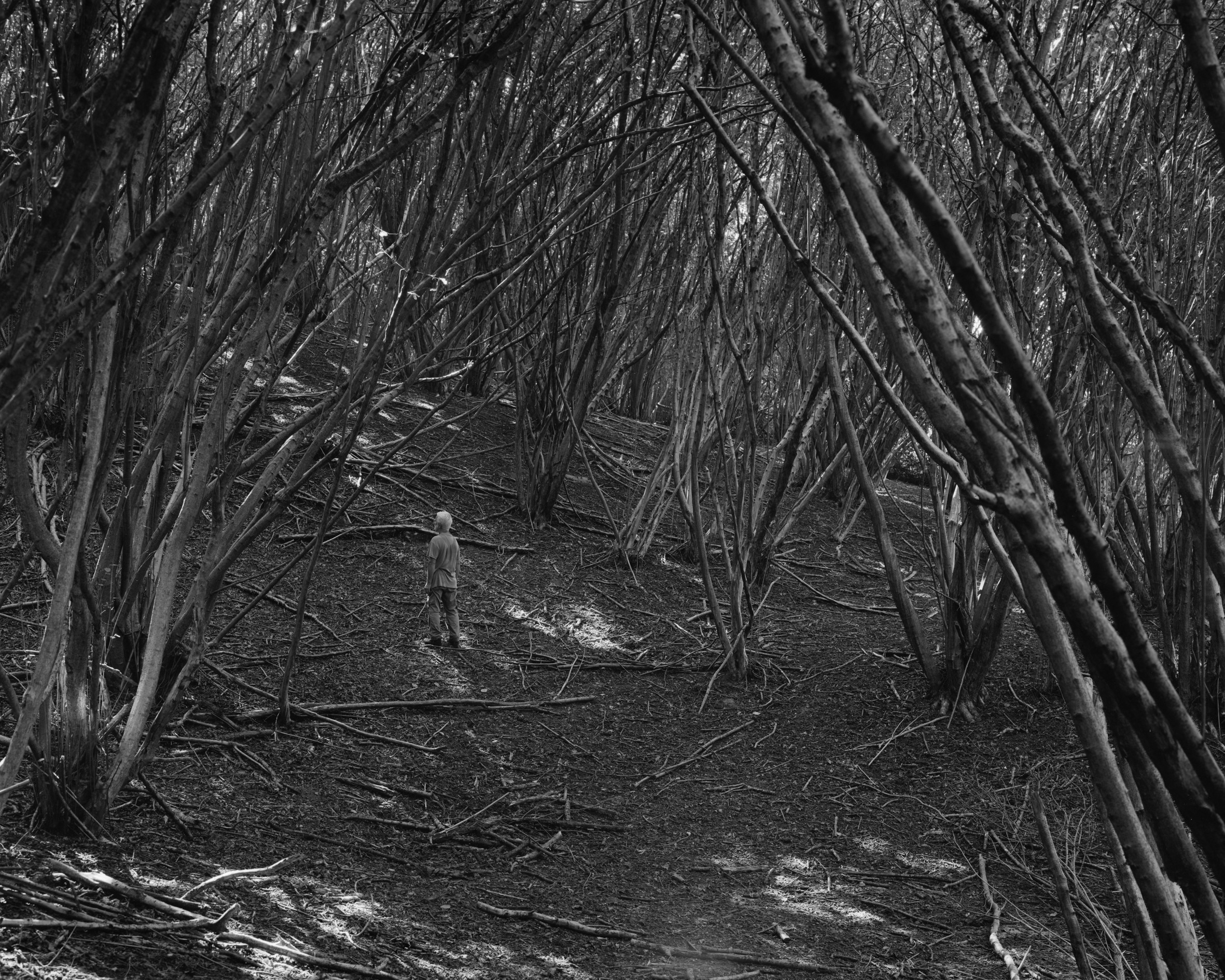Castelfranco Veneto, 2021
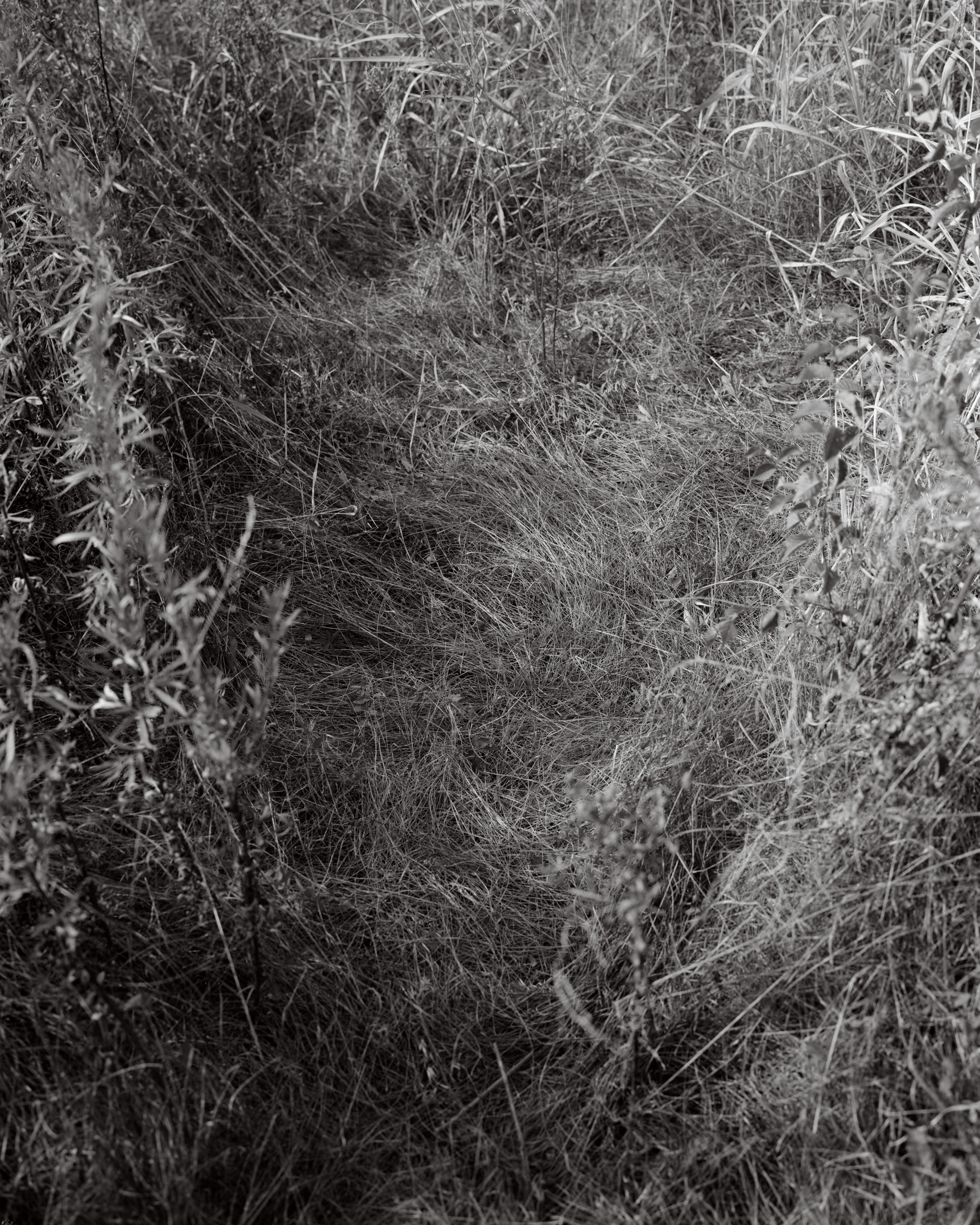
In ancient times, Europe must have been an enormous expanse of woods and men were nomadic in the jungle. In the tangle of trees a clearing sometimes opens up, where there is light and space to stop and organize a settled life. At that point civilization begins and the idea of the city begins. The city is organized around a square, which in ancient times was an open, undefined space (the Greek agorà, the Roman forum). Man progressively steals space from nature for his living in community: cuts down trees, frees up space and procures materials for construction. He denies nature and leaves it outside the city limits. Forest comes from the Latin word fores (outside), as well as forestiero (stranger).
By tracing the furrow that defines the city, dividing it from nature, a border is drawn that is common to the inside and the outside. In every definition what is denied is always present in what is affirmed and, even if hidden, determines it. And so the city carries within itself the signs of the nature that it wanted to deny. The models on which the city is built can only be taken from the ones of nature, from which the common life of men was born. Thus the square recalls the clearing, the columns recalls the trees that surround it, the statue in the center of the temple comes from the sacred tree.
The cities and urbanized areas of our country, if seen from this perspective, allowing ancient times to weigh and resonate, hide their origin and remind us of it. Thus a highly anthropized area like that of Castelfranco Veneto keeps hidden the references to its past and reminds us of the time in which it must have been covered with woods, as in the toponym of one of its neighborhoods Salvarosa, which retains the prefix salva– common in the area and which derives from the Latin silva (forest). Even a roundabout seems to be built on the model of a clearing, simply reversed, with the trees relegated to the center; the fences of the private gardens follow the furrow that marks a border; the reinforced concrete pillars of the new buildings look like the trunks of ancient stilt houses; a small hill in a suburban park recalls an ancient altar; a mound of earth recalls a primitive burial.
Even leaving the city, the Venetian plain, which is an uninterrupted succession of cultivated fields, speaks to us of man’s effort to tame nature. Agriculture forces it to meet man’s needs, manipulates it but at the same time affirms man’s indissoluble bond with nature, his dependence on it.
To recognize this relationship we need a nastonishment in the gaze and a reflection on the landscape. But the signs fade and if man no longer sees his origin in the relationship with nature, then time becomes a boulder that pushes nature back into a dark past and man wanders lost.

